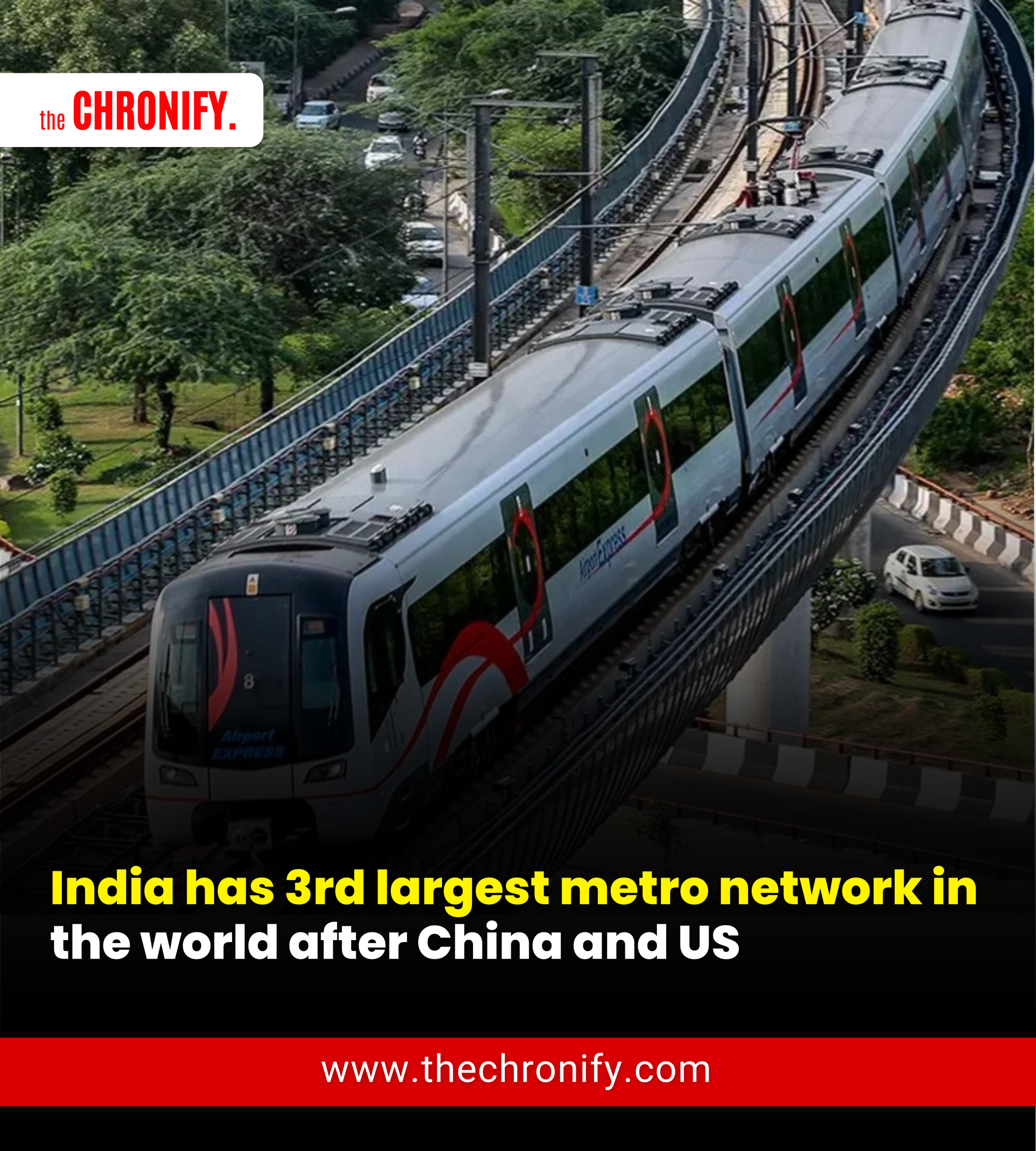India has become the world’s third-largest operator of metro rail networks, trailing only China and the United States, after surpassing Japan in 2022. The country recently crossed the landmark of 1,000 kilometers of operational metro rail, marking a significant achievement in urban transit.
This milestone was reached when Prime Minister Narendra Modi inaugurated a 2.8 km stretch between Janakpuri and Krishna Park as part of Delhi Metro Phase-IV on January 5, 2024. On the same day, he also launched a 13 km section of the Delhi-Ghaziabad-Meerut Namo Bharat corridor, connecting Sahibabad and New Ashok Nagar.
The Namo Bharat, India’s first Regional Rapid Transit System (RRTS), had earlier begun operations in October 2023 with a 17 km stretch between Sahibabad and Duhai Depot in Uttar Pradesh. With the new extensions, the RRTS now links directly to Delhi.
India’s urban rapid transit, commonly called metro rail, includes underground, surface, and elevated rail networks that help ease congestion in major cities. The world’s first metro, the London Underground, began in 1863, while India’s first metro service was launched in Kolkata in 1984 with Soviet assistance, connecting Esplanade and Bhowanipur.
Delhi, however, introduced the country’s first modern metro system in 2002, supported by Japan, and has since become India’s largest network, covering 395 km under the Delhi Metro Rail Corporation (DMRC).
Currently, under Delhi Metro Phase 4, another 112.32 km is under construction, including the Rithala–Narela–Nathupur (Kundli) line, for which Prime Minister Modi laid the foundation stone in January 2025.
Another major development came in March 2024, when India’s first underwater metro became operational in Kolkata, running under the Hooghly River. This 520-meter-long tunnel allows trains to cross beneath the river in just 45 seconds.
Today, metro services span 23 cities across 11 Indian states, reflecting the rapid expansion of India’s urban transportation network.

